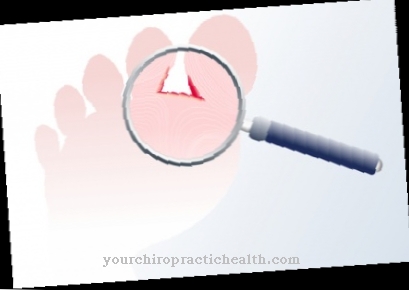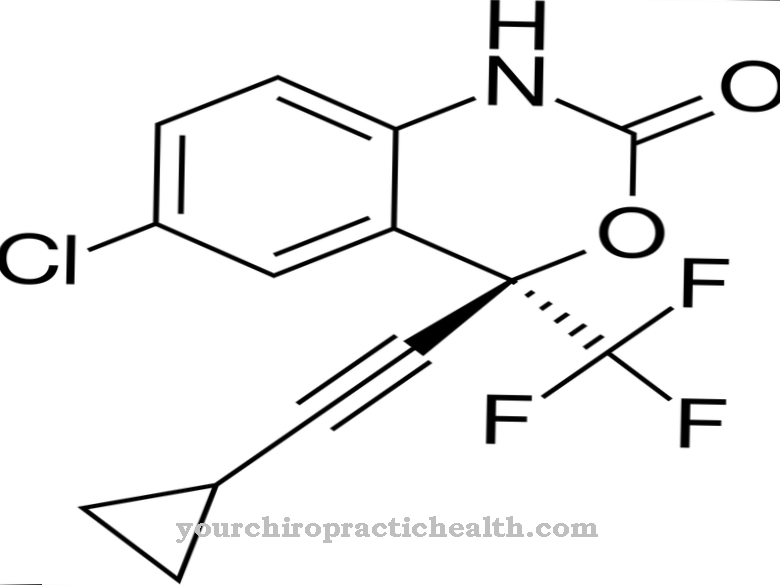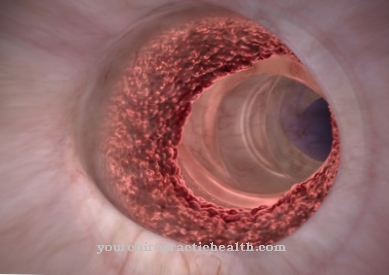At Promazine it is an active ingredient that is used in psychoses, drug withdrawal, states of excitement or to calm down before operations. In combination with other active ingredients, Promazine is also used for severe to very severe pain, massive vomiting and persistent itching.
What is promazine
Promazin belongs to the group of phenothiazines and is a neuroleptic for the treatment of psychotic illnesses. Its effect is based on the antagonism (mutual mode of action) at the dopamine receptors.
In medicinal products, the active ingredient occurs as a white, crystalline powder (promazine hydrochloride). It is easily soluble in water and has a half-life of up to 35 hours. However, drugs with the active ingredient promazine are no longer available in Germany.
Pharmacological effect
The effect of promazine as a neuroleptic is calming and relaxing. It invokes antipsychotic, dampening and antiemetic properties, which are based on the antagonism of dopamine, histamine, serotonin and muscarinic receptors and adrenoceptors. The receptors are blocked by promazine.
The active ingredient has such a relaxing effect that nausea is inhibited and the substance is therefore used before operations and anesthesia. The active ingredient can also prevent cardiac arrhythmias caused by anesthetics. How exactly the effects of promazine are developed is still unknown.
Medical application & use
Promazin is used in psychoses, states of delirium, states of excitement and restlessness as well as drug withdrawal. It is also used to calm down before operations and anesthesia.
Due to its relaxing effect on the internal organs, it is used in combination with other active ingredients to treat severe to very severe pain, persistent itching and severe vomiting. It is commercially available in the form of dragees and can be taken up to 4 times a day (every 4 to 6 hours).
In patients over 65 years of age, with severe depression, bronchial asthma and chronic breathing disorders, with liver damage, with severe hypotension and with a large number of other illnesses, drugs containing the active ingredient should only be administered carefully and in low doses under medical supervision.
You can find your medication here
➔ Medicines to calm down and strengthen nervesRisks & side effects
Promazine should not be used in the presence of known hypersensitivity, in the case of comatose conditions due to alcohol or central depressant medication, in the presence of bone marrow depression or in narrow-angle glaucoma.
Furthermore, the active ingredient must not be used in babies under 3 months of age or in disorders of the blood-forming system. Children from the age of 12 - as well as pregnant and breastfeeding women - can take Promazin after carefully weighing the benefits and risks under medical supervision.
Promazine can cause various side effects, which do not affect every person or to varying degrees. The side effects include drowsiness, headache, dizziness, drowsiness, dry mouth, weight gain, constipation, water retention, allergic skin reactions with itching, listlessness, gastrointestinal problems, visual disturbances (including clouding of the lens and cornea), drop in Blood pressure, movement disorders (e.g. stiffness of the muscles, slowing of movements), disorders when emptying the bladder, increased sensitivity to light, nerve dysfunction, menstrual disorders, depression, tremors or racing heart. The side effects usually also depend on the type of medication (e.g. tablets, syringes) and the frequency of use.
Various interactions are also known. Promazin, for example, enhances the effects of drugs used to dampen the nervous system, drugs used to lower blood pressure and the side effects of other neuroleptics and active ingredients such as domperidone.
Promazine reduces the effectiveness of agents used to treat Parkinson's and diabetes. By taking milk, tea, coffee or fruit juices, the effect of promazin is reduced. If lithium is taken at the same time, symptoms of poisoning may occur.
The effect of promazine is increased by narcotics, which increases the risk of unconsciousness and coma. If suxamethonium is taken at the same time as Promazine, serious side effects can occur. Cramps can be the result of taking promazine and medication containing the active ingredient pentetrazole at the same time. If the doctor prescribes tricyclic and tetracyclic antidepressants, these substances increase each other.



























